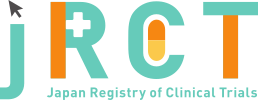臨床研究等提出・公開システム
|
Sept. 11, 2019 |
|
|
Mar. 25, 2022 |
|
|
jRCT2080224863 |
A multi-center, open-label clinical pharmacology study to evaluate the pharmacokinetics, pharmacodynamics and safety of TMX-049 multiple oral administration in subjects with normal renal function or impaired renal function. |
|
A clinical pharmacology study of TMX-049 in subjects with normal renal function or impaired renal function. |
|
Aug. 28, 2020 |
|
24 |
|
Subjects with normal renal function, moderate or severe impaired renal function(20 to 75 years old Japanese males) |
|
Informed consent: 39 [Normal renal function] Number of subjects who received the study treatment: 8 Number of subjects who discontinued the study: 0 Number of subjects who completed the study: 8 [Moderate renal impairment] Number of subjects who received the study treatment: 8 Number of subjects who discontinued the study: 0 Number of subjects who completed the study: 8 [Severe renal impairment] Number of subjects who received the study treatment: 8 Number of subjects who discontinued the study: 0 Number of subjects who completed the study: 8 |
|
Adverse events (AEs) were observed in 3, 1, and 1 subject(s) in the normal renal function, moderate renal impairment, and severe renal impairment groups, respectively. Adverse drug reactions (ADRs) were observed in 2, 1, and 0 subject(s) in the normal renal function, moderate renal impairment, and severe renal impairment groups, respectively. All AEs were mild in severity and there were no deaths, SAEs, or AEs leading to discontinuation of the study treatment. |
|
In pharmacokinetics (PK), the geometric mean ratio and the 90% confidence interval (CI) of area under plasma concentration of TMX-049-time curve from time 0 to 24 h after administration (AUC0-24h), maximum blood concentration (Cmax), and total clearance (CL/F), in renal impairment against normal renal function, were as follows. <Severe renal impairment group> AUC0-24h:1.572 (1.02-2.43)* Cmax:1.068 (0.678-1.682)* CL/F:0.636 (0.41-0.98)* <Moderate renal impairment group> AUC0-24h:1.031 (0.70-1.51)* Cmax:0.906 (0.555-1.479)* CL/F:0.970 (0.66-1.42)* *:the geometric mean ratio (90% CI) In the severe renal impairment group, AUC0-24h was 1.572-fold higher and CL/F was 0.636-fold lower than those in the normal renal function group. In pharmacodynamics (PD), the mean percent change from baseline of the minimum uric acid levels (Cmin) was -54.16%, -43.12%, and -45.13% in the normal renal function, moderate renal impairment, and severe renal impairment groups, respectively, and that of mean uric acid concentration from time zero to 24 h (Cmean24h) was -50.58%, -39.59%, and -42.52%, respectively. The difference of mean percent changes from the normal renal function group and its 95% confidence interval (in parentheses) were as follows. <Severe renal impairment group> Cmin:9.03 (2.03-16.02)** Cmean24h:8.06 (0.97-15.15)** <Moderate renal impairment group> Cmin:11.04 (4.30-17.78)** Cmean24h:10.99 (3.83-18.15)** **:difference of mean (95% CI) In both severe and moderate renal impairment groups, changes from baseline in both Cmin and Cmean24h were smaller than that in the normal renal function group. |
|
- |
|
Plasma exposure of TMX-049 tended to increase in patients with severe renal impairment compared to those with normal renal function, but no clear difference was observed in patients with moderate renal impairment. In both severe and moderate renal impairment groups, changes from baseline in serum uric acid levels after the TMX-049 administration were smaller than those in the normal renal function group. No specific safety concerns were identified in any of the groups. |
|
No |
|
- |
|
https://www.clinicaltrials.jp/file/xMjTZfqed |
|
| version: date:Mar. 23, 2020 |
Teijin Pharma Limited |
||
clintrials@teijin.co.jp |
Teijin Pharma Limited |
||
clintrials@teijin.co.jp |
completed |
Sept. 02, 2019 |
||
| 24 | ||
Interventional |
||
Multicenter, Open-label |
||
treatment purpose |
||
2 |
||
-Estimated eGFR(mL/min/1.73 m2) * within the categories shown below |
||
-Patients who have gouty arthritis |
||
| 20age old over | ||
| 75age old under | ||
Male |
||
Subjects with normal renal function and patients with impaired renal function. |
||
investigational material(s) |
||
safety |
||
other |
||
| Teijin Pharma Limited | |
| - |
| Teijin Pharma Limited | |
| - |
| P-One Clinic, Keikokai Medical Corp. IRB | |
| 4F, View Tower Hachioji, 8-1, Yokamachi, Hachioji-shi, Tokyo 192-0071, Japan | |
- |
|
| - | |
| approved | |
Aug. 09, 2019 |
| JapicCTI-194947 | |
| Japan |
